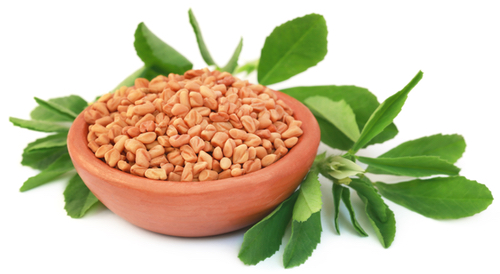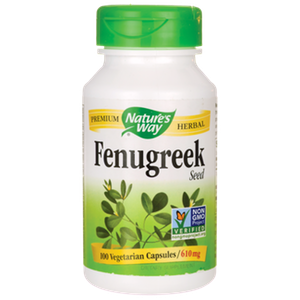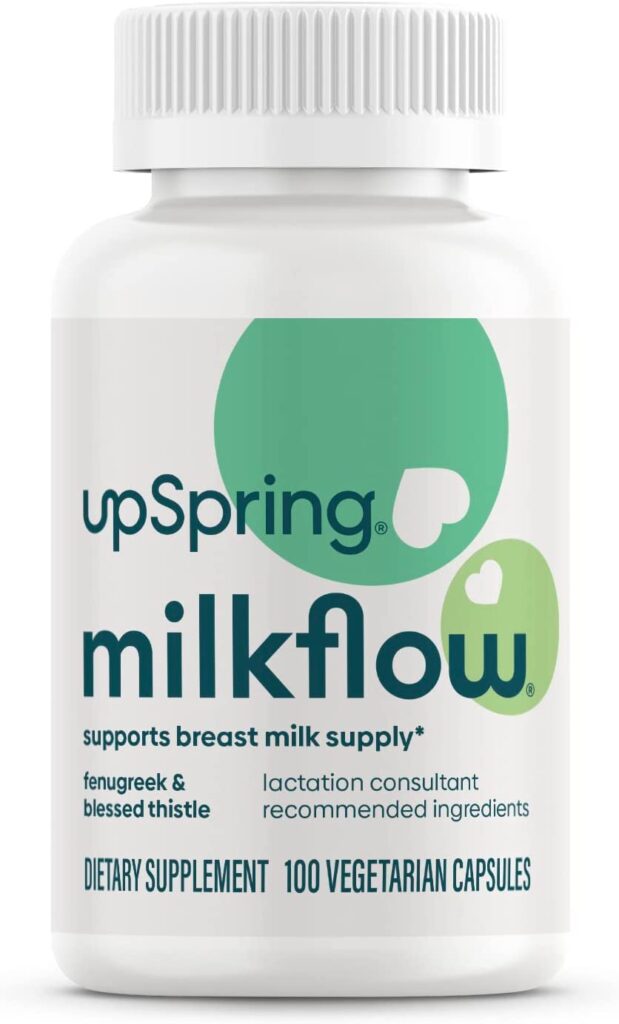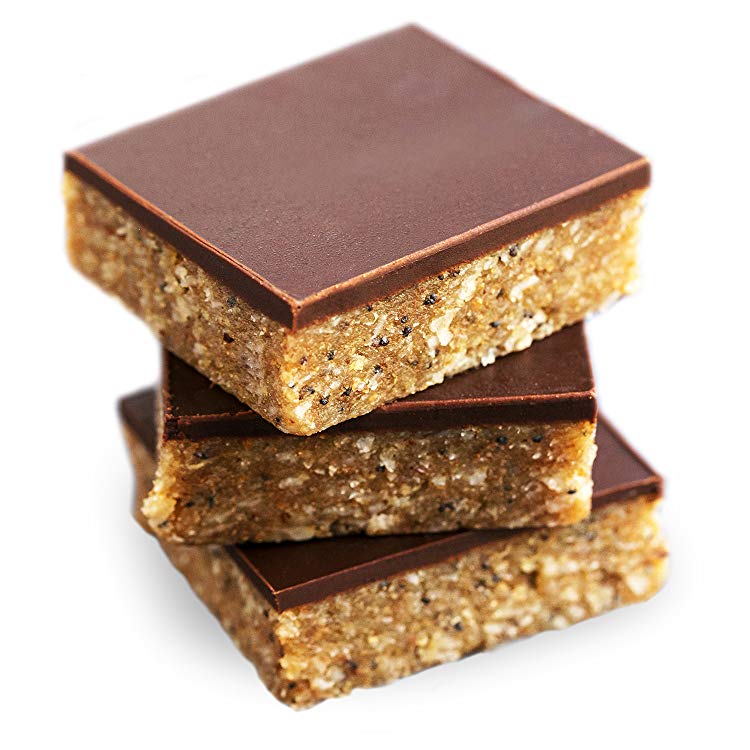Nursing Supplements – do they work?

Before we get started, if you’re new to nursing, check out our primer on all-things breastfeeding for singletons or twins.
Internally, several hormones work in tandem (prolactin, progesterone, estrogen, and insulin, among others) to signal the body to produce milk. How do nursing supplements factor into this?
Externally, feeding cues, how much milk has been removed, feeding frequency, and other key measures play a role in your milk production. Your diet, lifestyle, social support, and mental wellbeing can also affect breastfeeding. Put simply, there are tons of factors that play into lactation and milk supply – it’s a pretty mystical thing.

“Galactagogue” sounds like the latest sci-fi movie, but it’s actually a fancy word for a substance that boosts milk supply. Galactagogues come in different forms — synthetic, pharmacological, whole foods, tea, herbal supplements — and constitute a tiny but fascinating area of research.
Like teething remedies and other topics we’ve researched, the science behind nursing/breastfeeding supplements is meager (we’re talking single-digit studies), yet the use of nursing supplements remains a widespread phenomenon throughout the world.
Who Needs a Galactagogue?
Probably not as many women as you think, they say.
Supposedly, there is a glaring discrepancy between the number of women who think they have a low milk supply (reported to range from 30-75%) and the number of women who actually have a low milk supply (reported at less than 5%). (This dissonance is so great that researchers refer to “perceived low milk supply,” rather than actual “low milk supply.”) [1]
One thing’s for certain: the lack of confidence in one’s supply is a universal theme. As the Australian Breastfeeding Association bluntly puts it: “the majority of mothers who think they have a low milk supply problem actually don’t.” [2]
And yet.
Many of us have been through periods when our babies nurse until there’s nothing left, then seemingly yearn for more. It’s not just our imaginations, I assure you. This might be a particularly exasperating feeling during growth spurts, when babies need to eat more (and more frequently). Since growth spurts are so numerous in the first year (a few weeks, 1 month, 2 months, 4 months, 6 months…), nursing moms might have this feeling quite often.
Anecdotally, 4 – 5 months is a time when many women have concerns about their supply.

Outside of that, you may also be suffering from a decreased supply from skipped feedings when supplementing with formula, either out of necessity or because you’re too damn tired of being the sole source of food for an entire human being. Or maybe you had a few too many cocktails at the Pearl Jam concert and fell asleep before you remembered to pump. This happened to… a friend.
All I’m saying is… feeling like your supply is too low, whether real or perceived, is a universal (and super stressful!) feeling.
The bottom line is that women who feel more confident in their milk supply are more likely to enjoy breastfeeding and continue to nurse for longer. There is even some indication that galactagogues might “work” by eliciting psychological benefits (such as a heightened sense of self-efficacy and self-confidence).[3]
Decongestants
Be careful during cold season!
One thing that catches many nursing moms off-guard is that decongestants that contain pseudoephedrine (taken for a cold or allergies, for example) can decrease their milk supply. In one study of 8 lactating mothers, a single dose of pseudoephedrine reduced milk production by a whopping 24%. Also, according to kellymom.com, excessive doses of menthol — the active ingredient in cough drops — might also diminish your supply.
Beyond low milk supply – ahem, sorry, perceived low milk supply – galactagogues are often an extremely handy tool for other groups of women looking to breastfeed: mothers of preemies or NICU babies, adoptive mothers, and mothers suffering from an illness. Yes, non-birth mothers can lactate (or re-lactate).
Types of Nursing Supplements
Estimates indicate that about 15% of nursing moms try a milk-boosting supplement at some point in their nursing careers. The options fall into two broad categories: pharmaceuticals and non-pharmaceuticals.
We’ll quickly take a look at the prescription route before examining the more popular herbal galactagogues. Finally, we’ll run through a handful of supposedly-milk-boosting foods. But first, a brief aside…
Pharmaceuticals
Off Label Use
When prescribed to increase milk supply, both of the following pharmaceuticals fall into the category of “off label.” This means that the medications are being prescribed for a purpose other than what they are generally used and approved for (in this case, increasing milk supply).
For example, the drug Prazosin was designed to treat hypertension, but it’s also used to treat nightmares related to post-traumatic stress disorder (PTSD). Usually these things are discovered by accident.
For the most part, pharmaceuticals work to increase milk supply by blocking dopamine. Given their effects on the central nervous system, they are rightfully called “dopamine antagonists,” and are associated with some unwanted and sometimes-serious side effects (messing with your dopamine can be risky business).
These medicines are typically only used as a very last resort, and every woman’s situation is going to be different in terms of weighing the pros and cons of taking these drugs.
The two most common prescription galactagogues are metoclopramide (Reglan) and domperidone, both of which do effectively enhance milk supply. At a cost.
Metoclopramide (brand name: Reglan) has more data behind it, but is statistically more likely to cause side effects such as fatigue, irritability, depression, and even symptoms that may affect motor activity. It also has a higher rate of transfer to infants. Strangely enough, it was initially marketed as an anti-psychotic drug; doctors picked up on its lactation-boosting effects in 1979 (hence, the “off-label” usage).
Domperidone would be the “preferred” lactation pharmaceutical (though there’s less evidence behind it) given that it does not cross the blood-brain barrier, is secreted in smaller amounts in breastmilk, and is much less likely to cause side effects. Bad news: it’s not FDA approved and is technically only available outside of the U.S. (Australia and Canada, for example). [4]
There is also some research regarding the use of traditional antipsychotics as galactagogues, but these aren’t used much at all anymore because they can have some really nasty effects. [5]
The bottom line with pharmaceutical galactagogues is that you must talk to your doctor. Many of these drugs have serious side effects, so it’s important that you are under close medical supervision.
Anecdotally, it seems as though some docs are eager to write prescriptions for Reglan, etc., while for others, it’s more of a last resort.
A few of our subscribers who were prescribed Reglan began to suffer from major depression and even postpartum psychosis and were completely unaware of this potential side effect. If your doctor doesn’t discuss these potential side effects (sometimes they don’t!), ask about it — and be aware!
For that, let’s move on to the recreational stuff, if you will….
Herbal Nursing Supplements
Herbal supplements – in general – are unregulated and not as well studied as biomedical drugs. The FDA has virtually no regulatory authority over the entire supplement industry. Manufacturers can put out products with almost whatever claims they like (“supports a healthy immune system”; “boosts energy”; and my favorite, “have the best brain of your life”), without a shred of evidence testifying to their efficacy or safety.

That said, we have a good bit of reason to think that some herbal galactagogues work for many women, and that they are probably safe. (As a side note, it is very difficult to say that anything is “100% safe,” and doctors are loathe to do so, understandably. Lawsuits and all. You feel me?)
Some herbal breastfeeding supplements are associated with side effects, such as upset stomach symptoms, strange body smells, and allergic reaction, but those effects are typically benign and limited to the short term. By and large, the really nasty side effects are confined to the aforementioned pharmaceuticals. [6]
Again, there are very few trials evaluating the safety or efficacy of galactagogues, and those that do exist all suffer weaknesses (they aren’t randomized, double-blinded, etc.), which diminish the value of the studies’ findings.
Translation: take all of this with a grain of salt.
Among herbal galactagogues, there are a couple of clear favorites. Let’s take a closer look —
Fenugreek
Backed by the most evidence and used more than any other herbal galactagogue, fenugreek is far and away the “darling” of the herbal milk-boosters. Fenugreek is a leaf frequently used in Indian cuisine, but most westerners probably know it better as the ingredient added to processed syrups to give them their maple flavor (read: fake syrup).

For milk-boosting purposes, fenugreek can be taken as a tea or a supplement (which comes as a capsule filled with fenugreek powder), or can be used in recipes for oatmeal, cookies, etc. You might have seen these supplements in Whole Foods or at your local health food store.

The funny thing is, nobody knows exactly how fenugreek works. Some theorize that it helps by increasing sweat production (and therefore, breastmilk); others think fenugreek might stimulate oxytocin, provide fatty acids, or increase breast tissue. [8]
Regardless of how it works, the evidence and testimonials in support of fenugreek’s galactagogic effects are intriguing.
There are two frequently-cited trials involving fenugreek that offer conflicting conclusions (one said it worked, and the other said it didn’t). There is plenty of anecdotal information as well. An informal report authored by nurse Kathleen Huggins, who runs the breastfeeding clinic at San Luis Obispo General Hospital in California, reported that nearly all of 1,200 women Huggins worked with who took fenugreek reported an increase in milk supply, typically within the first 1-3 days of taking it. [10]
A different anecdotal account surveying La Leche League representatives indicated that fenugreek boosted milk supply in 75% of women. [11] Not surprisingly, fenugreek seeds have also been observed to increase milk production among buffaloes and goats. [12]
Fenugreek Dosing
As a nursing supplement, it’s recommended that women take 2-4 capsules (containing 580-610 mg fenugreek) three times per day (for a total of about 6 grams). Yes — it’s a lot. And some health professionals note that taking less than this is usually completely ineffective.
Side effects: Many women say that fenugreek causes a maple-syrup body odor (pancakes, anyone?), and has the potential to aggravate asthma. (Another thing: because it passes into breastmilk, your baby’s urine might also smell like maple – sweet??). Said one mom: “if you aren’t smelling like maple syrup, you aren’t taking enough!” – ha!
A few women reported upset-stomach symptoms such as diarrhea or nausea, which subsided when they stopped taking it. Also note that sometimes fenugreek works “too well”: in one interview project of 188 nursing moms, 46% said they tried fenugreek, and one of the side effects they described was oversupply.

Contraindications: Fenugreek should not be taken during pregnancy (it can stimulate uterine contractions), or by anyone with an allergy to chickpeas or peanuts. It’s also contraindicated for diabetics because it can lower blood glucose levels. It might interact with certain medications, like warfarin, and isn’t recommended for anyone suffering from thyroid problems. If you’re taking other medications, talk to your doctor before taking it.
Other Galactagogues
There are three other prominent galactagogues (or suspected galactagogues, I should say) that have been used and studied (though not very thoroughly) around the world in native cultures. These include silymarin, which comes from milk thistle, torbangun leaves from Indonesia, and shatavari, a special kind of asparagus (of sorts), though not one that can be picked up at your local Safeway [snort]. Shatavari has a longstanding place in ayurvedic medicine, and is commonly used in eastern countries.

Of these, both the silymarin and torbangun leaves showed promising (though potentially flawed) results, while the results from the shatavari studies were conflicting (one said it did nothing and the other suggested it worked).
See? Super straight-forward!
Other Possible Galactagogues
There are a number of other plants and foods people use as galactagogues, but they haven’t been studied. These include fennel, anise, alfalfa, goat’s rue, blessed thistle, oatmeal, and brewer’s yeast, among others. In other words, you can take this stuff if it makes you happy, but they haven’t been studied for efficacy.
In fact, there are some very popular teas and bars that use a combination of these ingredients. *Note that many lactation “bars” have the same problem as most other bars in the world: they’re full of sugar. And sugar is the devil, in case you haven’t heard. 😉
One thing that will not help boost your milk supply is… beer. Damn!

Although some of the ingredients in beer are touted as galactagogic – namely barley, grains, hops, and yeast – the unfortunate reality is that alcohol, in any form, inhibits lactation by depressing milk production and impeding the let-down reflex, which is critical to nursing. Brit’s written about the relationship between alcohol and nursing on her own blog, if you’re interested in learning more about this.
This is not to say you’re prohibited from drinking any alcohol during your nursing tenure, we’re just saying that alcohol works against you if you’re trying to increase milk production.
At the end of the day, the best supplements we have are fenugreek and milk thistle. It’s no surprise that you will find these in most of the well-known concoctions on the market.
Recommended Supplements
In our quest to find reliable herbal nursing supplements, there were a few that stood out with consistently high ratings:
Traditional Medicinals Organic Mother’s Milk Tea
This caffeine-free lactation tea contains a mixture of the aforementioned suspected galactagogues (including some that aren’t on the list). It has a bit of a licorice taste, which not everyone loves, though most reviewers were okay with it. It’s definitely the most frequently reviewed and highly-rated nursing tea on the internet. Potential downside: you have to really like tea a lot to drink it 3+ times a day…


If you’re not a huge fan of tea, check out…
UpSpring Milkflow Fenugreek and Blessed Thistle Capsules
This is the most efficient way of ingesting fenugreek if you don’t want to drink copious amounts of tea or eat special foods. The recommended dosage of 2 – 3 capsules per day is fewer than you’d have to take with other brands (though our research indicates that you’d actually need to take 3 – 4 of these capsules daily (6 grams) in order to see a boost). *Again, consult a doctor if you have diabetes or other blood sugar issues.


Mrs. Patel’s Herbal Supplements
Mrs. Patel’s is a mom-owned company in San Francisco that strives to bring Ayurvedically-inspired lactation treats & teas to women everywhere. There are three product types we like from Mrs. Patel’s: the bars, the teas, and the Munch Crunch, which you can add to anything, like salads, smoothies… anything.


Go-Lacta
Go-Lacta uses Premium Philippine Malunggay as the active ingredient and was recommended by many of our readers. This highly-rated product comes in tea or capsule form.
The few projects assessing malunggay indicate that its use is associated with a higher milk output.[19] It doesn’t necessarily have the same kind of data and anecdotal evidence behind it as fenugreek, but malunggay seems to be a very safe option with virtually no side effects.[20] Thus, if you’re looking for something to help boost your supply – and walking around smelling like maple syrup isn’t your thing – Go-Lacta is definitely worth a shot 😉.


Supplements in Perspective
As a result of this skyrocketing demand and the proliferation of positive testimonials, studies showed that 65% of lactation consultants said they had recommended an herbal galactagogue to their clients and 70% of health care professionals (pediatricians, lactation consultants, doulas, and obstetricians) did the same.
The overwhelming favorite was fenugreek, and a clear majority (60.5%) of the providers who recommended a galactagogue said that their patients/clients reported improvement (about a third more “were not sure if there was change”). A full 86% of those surveyed said they would recommend it again. [17]

Back to: Most Popular Infant Topics
[1] Shahla Meedya, Kathleen Fahy, and Ashley Kable, “Factors That Positively Influence Breastfeeding Duration to 6 Months: A Literature Review,” Women and Birth 23, no. 4 (December 1, 2010): 137, doi:10.1016/j.wombi.2010.02.002; Alessandra N Bazzano et al., “Maternal Experiences with and Sources of Information on Galactagogues to Support Lactation: A Cross-Sectional Study,” International Journal of Women’s Health 9 (February 27, 2017): 105, doi:10.2147/IJWH.S128517.
[2] Australian Breastfeeding Association, “Galactagogues (Substances Claimed to Increase Supply),” Australian Breastfeeding Association, January 24, 2012; Siew Cheng Foong et al., “Oral Galactagogues for Increasing Breast-Milk Production in Mothers of Non-Hospitalized Term Infants,” in Cochrane Database of Systematic Reviews (John Wiley & Sons, Ltd, 2015), 1, doi:10.1002/14651858.CD011505.
[3] Rachel Emma Westfall, “Galactagogue Herbs: A Qualitative Study and Review,” Canadian Journal of Midwifery Research and Practice 2, no. 2 (Fall 2003): 23; Meedya, Fahy, and Kable, “Factors That Positively Influence Breastfeeding Duration to 6 Months,” 135, 142; Tin Fei Sim et al., “Perspectives and Attitudes of Breastfeeding Women Using Herbal Galactagogues during Breastfeeding: A Qualitative Study,” BMC Complementary and Alternative Medicine 14 (July 2, 2014): 9, doi:10.1186/1472-6882-14-216; Tin Fei Sim et al., “The Use, Perceived Effectiveness and Safety of Herbal Galactagogues During Breastfeeding: A Qualitative Study,” International Journal of Environmental Research and Public Health 12, no. 9 (September 7, 2015): 11066–67, doi:10.3390/ijerph120911050.
[4] Michael P. Gabay, “Galactagogues: Medications That Induce Lactation,” Journal of Human Lactation 18, no. 3 (August 1, 2002): 276, doi:10.1177/089033440201800311; Nicky Wesson, “Breast Milk Production and the Role of Galactagogues,” MIDIRS Midwifery Digest 19, no. 3 (2009): 405; Antonio Alberto Zuppa et al., “Safety and Efficacy of Galactagogues: Substances That Induce, Maintain and Increase Breast Milk Production,” Journal of Pharmacy & Pharmaceutical Sciences 13, no. 2 (May 26, 2010): 162, 165, doi:10.18433/J3DS3R; Philip O. Anderson, “The Galactagogue Bandwagon,” Journal of Human Lactation 29, no. 1 (February 1, 2013): 8, doi:10.1177/0890334412469300; Grzeskowiak and Amir, “Pharmacological Management of Low Milk Supply with Domperidone,” 257; Jacqueline C. Kent, Danielle K. Prime, and Catherine P. Garbin, “Principles for Maintaining or Increasing Breast Milk Production,” Journal of Obstetric, Gynecologic, & Neonatal Nursing 41, no. 1 (January 1, 2012): 117–18, doi:10.1111/j.1552-6909.2011.01313.x.
[5] Gabay, “Galactagogues,” 274.
[6] Alessandra N Bazzano et al., “Health Provider Experiences with Galactagogues to Support Breastfeeding: A Cross-Sectional Survey,” Journal of Multidisciplinary Healthcare 9 (November 17, 2016): 628, doi:10.2147/JMDH.S121788.
[7] See, for example: Bazzano et al., “Maternal Experiences with and Sources of Information on Galactagogues to Support Lactation,” 106; Anderson, “The Galactagogue Bandwagon.”
[8] Westfall, “Galactagogue Herbs: A Qualitative Study and Review,” 25–26.
[9] Rizal Damanik, Mark L. Wahlqvist, and N. Wattanapenpaiboon, “Lactagogue Effects of Torbangun, a Bataknese Traditional Cuisine,” Asia Pacific Journal of Clinical Nutrition 15, no. 2 (2006): 267–74.
[10] Kathleen E. Huggins, “Fenugreek: One Remedy for Low Milk Production,” n.d.
[11] Sim et al., “The Use, Perceived Effectiveness and Safety of Herbal Galactagogues During Breastfeeding,” 11052.
[12] Felipe Penagos Tabares, Juliana V. Bedoya Jaramillo, and Zulma Tatiana Ruiz-Cortés, “Pharmacological Overview of Galactagogues,” Veterinary Medicine International 2014 (2014): 12–13, doi:10.1155/2014/602894.
[13] Pamela Jackson, “Complementary and Alternative Methods of Increasing Breast Milk Supply for Lactating Mothers of Infants in the NICU,” Neonatal Network 29, no. 4 (July 1, 2010): 227, doi:10.1891/0730-0832.29.4.225.
[15] Anderson, “The Galactagogue Bandwagon,” 8.
[16] Amy L. Stump and Whitney A. Buckley, “Is Fenugreek Safe and Effective as a Lactation Enhancer?,” Evidence-Based Practice 12, no. 11 (November 2009): 10–11.
[17] Alessandra N. Bazzano et al., “A Review of Herbal and Pharmaceutical Galactagogues for Breast-Feeding,” The Ochsner Journal 16, no. 4 (December 1, 2016): 521, doi:10.1043/TOJ-16-0012.1; Bazzano et al., “Health Provider Experiences with Galactagogues to Support Breastfeeding,” 623, 628.
[18] Tipu Khan, “CME Spotlight Series, Common Breastfeeding Problem, Part 2 of 3: Milk Supply” (California Academy of Family Physicians, November 2013).
[19] Criselda Espinosa-Kuo, “A Randomized Controlled Trail on the Use of Malunggay (Moringa Oleifera) for Augmentation of the Volume of Breastmilk Among Mothers of Term Infats,” The Filipino Family Physician 43, no. 1 (2005): 26–33. Corazon P. Estrella et al., “A Double=Blind, Randomized Controlled Trial on the Use of Malunggay (Moringa Oleifera) for Augmentation of the Volume of Breastmilk Among Non-Nursing Mothers of Preterm Infants” 49, no. 1 (2000): 3–5.
[20] Sidney J. Stohs and Michael J. Hartman, “Review of the Safety and Efficacy of Moringa Oleifera,” Phytotherapy Research: PTR 29, no. 6 (June 2015): 796–804, doi:10.1002/ptr.5325.